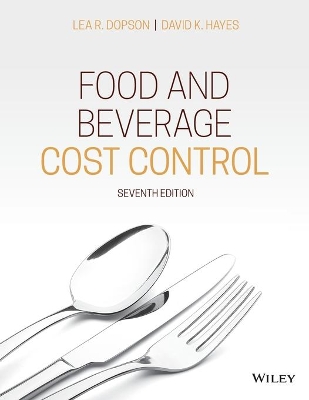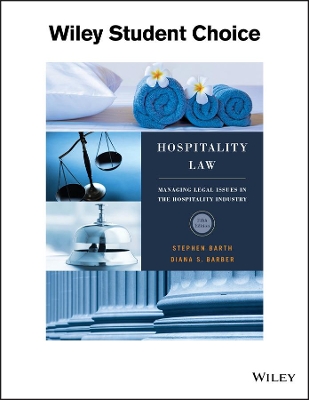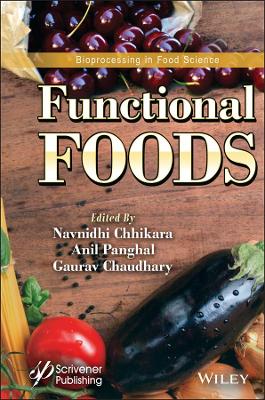Food and Beverage Cost Control
 -15%
portes grátis
-15%
portes grátis
Food and Beverage Cost Control
Hayes, David K.; Dopson, Lea R.
John Wiley & Sons Inc
09/2024
464
Mole
Inglês
9781119524991
15 a 20 dias
907
Descrição não disponível.
Preface vii
Acknowledgments xiii
Chapter 1: Managing Revenue and Expense 1
Professional Foodservice Manager 2
Profit: The Reward for Service 2
Getting Started 5
Understanding the Income (Profit and Loss) Statement 14
Understanding the Budget 18
Chapter 2: Creating Sales Forecasts 29
Importance of Forecasting Sales 30
Sales Histories 32
Maintaining Sales Histories 38
Sales Variances 39
Predicting Future Sales 41
Chapter 3: Purchasing and Receiving 57
Forecasting Food Sales 58
Forecasting Beverage Sales 60
Importance of Standardized Recipes 64
Purchasing Food 70
Purchasing Beverages 78
Purchase Orders 83
Receiving Food and Beverage Products 86
Chapter 4: Managing Inventory and Production 106
Product Storage 107
Storing Food Products 107
Storing Beverage Products 111
Inventory Control 114
Product Issuing and
Restocking 122
Managing Food Production 132
Managing Beverage Production 141
Chapter 5: Monitoring Food and Beverage Product Costs 153
Cost of Sales 154
Computing Cost of Food Sold 154
Computing Cost of Beverage Sold 157
Computing Costs with Transfers 158
Utilizing the Cost of Sales Formula 160
Reducing the Cost of Sales Percentage 175
Chapter 6: Managing Food and Beverage Pricing 197
Menu Formats 198
Menu Specials 202
Factors Affecting Menu Pricing 203
Assigning Menu Prices 211
Special Pricing Situations 215
Chapter 7: Managing the Cost of Labor 234
Labor Expense in the Hospitality Industry 235
Evaluating Labor Productivity 238
Maintaining a Productive Workforce 239
Measuring Current Labor Productivity 255
Managing Payroll Costs 267
Reducing Labor-Related Costs 277
Chapter 8: Controlling Other Expenses 289
Other Expenses 290
Controllable and Non-controllable Other Expenses 290
Fixed, Variable, and Mixed Other Expenses 293
Monitoring Other Expenses 296
Managing Other Expenses 299
Chapter 9: Analyzing Results Using the Income Statement 315
Introduction to Financial Analysis 316
Uniform System of Accounts 317
Income Statement (USAR format) 318
Analysis of Sales/Volume 323
Analysis of Food Expense 326
Analysis of Beverage Expense 329
Analysis of Labor Expense 331
Analysis of Other Expenses 333
Analysis of Profits 334
Chapter 10: Planning for Profit 349
Financial Analysis and Profit Planning 350
Menu Analysis 350
Cost/Volume/Profit Analysis 364
The Budget 371
Developing the Budget 374
Monitoring the Budget 379
Chapter 11: Maintaining and Improving the Revenue Control System 399
Revenue Security 400
External Threats to Revenue Security 401
Internal Threats to Revenue Security 406
Developing the Revenue Security System 410
The Complete Revenue Security System 417
Glossary 426
Index 434
Acknowledgments xiii
Chapter 1: Managing Revenue and Expense 1
Professional Foodservice Manager 2
Profit: The Reward for Service 2
Getting Started 5
Understanding the Income (Profit and Loss) Statement 14
Understanding the Budget 18
Chapter 2: Creating Sales Forecasts 29
Importance of Forecasting Sales 30
Sales Histories 32
Maintaining Sales Histories 38
Sales Variances 39
Predicting Future Sales 41
Chapter 3: Purchasing and Receiving 57
Forecasting Food Sales 58
Forecasting Beverage Sales 60
Importance of Standardized Recipes 64
Purchasing Food 70
Purchasing Beverages 78
Purchase Orders 83
Receiving Food and Beverage Products 86
Chapter 4: Managing Inventory and Production 106
Product Storage 107
Storing Food Products 107
Storing Beverage Products 111
Inventory Control 114
Product Issuing and
Restocking 122
Managing Food Production 132
Managing Beverage Production 141
Chapter 5: Monitoring Food and Beverage Product Costs 153
Cost of Sales 154
Computing Cost of Food Sold 154
Computing Cost of Beverage Sold 157
Computing Costs with Transfers 158
Utilizing the Cost of Sales Formula 160
Reducing the Cost of Sales Percentage 175
Chapter 6: Managing Food and Beverage Pricing 197
Menu Formats 198
Menu Specials 202
Factors Affecting Menu Pricing 203
Assigning Menu Prices 211
Special Pricing Situations 215
Chapter 7: Managing the Cost of Labor 234
Labor Expense in the Hospitality Industry 235
Evaluating Labor Productivity 238
Maintaining a Productive Workforce 239
Measuring Current Labor Productivity 255
Managing Payroll Costs 267
Reducing Labor-Related Costs 277
Chapter 8: Controlling Other Expenses 289
Other Expenses 290
Controllable and Non-controllable Other Expenses 290
Fixed, Variable, and Mixed Other Expenses 293
Monitoring Other Expenses 296
Managing Other Expenses 299
Chapter 9: Analyzing Results Using the Income Statement 315
Introduction to Financial Analysis 316
Uniform System of Accounts 317
Income Statement (USAR format) 318
Analysis of Sales/Volume 323
Analysis of Food Expense 326
Analysis of Beverage Expense 329
Analysis of Labor Expense 331
Analysis of Other Expenses 333
Analysis of Profits 334
Chapter 10: Planning for Profit 349
Financial Analysis and Profit Planning 350
Menu Analysis 350
Cost/Volume/Profit Analysis 364
The Budget 371
Developing the Budget 374
Monitoring the Budget 379
Chapter 11: Maintaining and Improving the Revenue Control System 399
Revenue Security 400
External Threats to Revenue Security 401
Internal Threats to Revenue Security 406
Developing the Revenue Security System 410
The Complete Revenue Security System 417
Glossary 426
Index 434
Este título pertence ao(s) assunto(s) indicados(s). Para ver outros títulos clique no assunto desejado.
foodservice costs; foodservice cost control; foodservice accounting; foodservice textbook; foodservice industry textbook, food and beverage textbook; food and beverage cost control; food and beverage accounting; hospitality cost control
Preface vii
Acknowledgments xiii
Chapter 1: Managing Revenue and Expense 1
Professional Foodservice Manager 2
Profit: The Reward for Service 2
Getting Started 5
Understanding the Income (Profit and Loss) Statement 14
Understanding the Budget 18
Chapter 2: Creating Sales Forecasts 29
Importance of Forecasting Sales 30
Sales Histories 32
Maintaining Sales Histories 38
Sales Variances 39
Predicting Future Sales 41
Chapter 3: Purchasing and Receiving 57
Forecasting Food Sales 58
Forecasting Beverage Sales 60
Importance of Standardized Recipes 64
Purchasing Food 70
Purchasing Beverages 78
Purchase Orders 83
Receiving Food and Beverage Products 86
Chapter 4: Managing Inventory and Production 106
Product Storage 107
Storing Food Products 107
Storing Beverage Products 111
Inventory Control 114
Product Issuing and
Restocking 122
Managing Food Production 132
Managing Beverage Production 141
Chapter 5: Monitoring Food and Beverage Product Costs 153
Cost of Sales 154
Computing Cost of Food Sold 154
Computing Cost of Beverage Sold 157
Computing Costs with Transfers 158
Utilizing the Cost of Sales Formula 160
Reducing the Cost of Sales Percentage 175
Chapter 6: Managing Food and Beverage Pricing 197
Menu Formats 198
Menu Specials 202
Factors Affecting Menu Pricing 203
Assigning Menu Prices 211
Special Pricing Situations 215
Chapter 7: Managing the Cost of Labor 234
Labor Expense in the Hospitality Industry 235
Evaluating Labor Productivity 238
Maintaining a Productive Workforce 239
Measuring Current Labor Productivity 255
Managing Payroll Costs 267
Reducing Labor-Related Costs 277
Chapter 8: Controlling Other Expenses 289
Other Expenses 290
Controllable and Non-controllable Other Expenses 290
Fixed, Variable, and Mixed Other Expenses 293
Monitoring Other Expenses 296
Managing Other Expenses 299
Chapter 9: Analyzing Results Using the Income Statement 315
Introduction to Financial Analysis 316
Uniform System of Accounts 317
Income Statement (USAR format) 318
Analysis of Sales/Volume 323
Analysis of Food Expense 326
Analysis of Beverage Expense 329
Analysis of Labor Expense 331
Analysis of Other Expenses 333
Analysis of Profits 334
Chapter 10: Planning for Profit 349
Financial Analysis and Profit Planning 350
Menu Analysis 350
Cost/Volume/Profit Analysis 364
The Budget 371
Developing the Budget 374
Monitoring the Budget 379
Chapter 11: Maintaining and Improving the Revenue Control System 399
Revenue Security 400
External Threats to Revenue Security 401
Internal Threats to Revenue Security 406
Developing the Revenue Security System 410
The Complete Revenue Security System 417
Glossary 426
Index 434
Acknowledgments xiii
Chapter 1: Managing Revenue and Expense 1
Professional Foodservice Manager 2
Profit: The Reward for Service 2
Getting Started 5
Understanding the Income (Profit and Loss) Statement 14
Understanding the Budget 18
Chapter 2: Creating Sales Forecasts 29
Importance of Forecasting Sales 30
Sales Histories 32
Maintaining Sales Histories 38
Sales Variances 39
Predicting Future Sales 41
Chapter 3: Purchasing and Receiving 57
Forecasting Food Sales 58
Forecasting Beverage Sales 60
Importance of Standardized Recipes 64
Purchasing Food 70
Purchasing Beverages 78
Purchase Orders 83
Receiving Food and Beverage Products 86
Chapter 4: Managing Inventory and Production 106
Product Storage 107
Storing Food Products 107
Storing Beverage Products 111
Inventory Control 114
Product Issuing and
Restocking 122
Managing Food Production 132
Managing Beverage Production 141
Chapter 5: Monitoring Food and Beverage Product Costs 153
Cost of Sales 154
Computing Cost of Food Sold 154
Computing Cost of Beverage Sold 157
Computing Costs with Transfers 158
Utilizing the Cost of Sales Formula 160
Reducing the Cost of Sales Percentage 175
Chapter 6: Managing Food and Beverage Pricing 197
Menu Formats 198
Menu Specials 202
Factors Affecting Menu Pricing 203
Assigning Menu Prices 211
Special Pricing Situations 215
Chapter 7: Managing the Cost of Labor 234
Labor Expense in the Hospitality Industry 235
Evaluating Labor Productivity 238
Maintaining a Productive Workforce 239
Measuring Current Labor Productivity 255
Managing Payroll Costs 267
Reducing Labor-Related Costs 277
Chapter 8: Controlling Other Expenses 289
Other Expenses 290
Controllable and Non-controllable Other Expenses 290
Fixed, Variable, and Mixed Other Expenses 293
Monitoring Other Expenses 296
Managing Other Expenses 299
Chapter 9: Analyzing Results Using the Income Statement 315
Introduction to Financial Analysis 316
Uniform System of Accounts 317
Income Statement (USAR format) 318
Analysis of Sales/Volume 323
Analysis of Food Expense 326
Analysis of Beverage Expense 329
Analysis of Labor Expense 331
Analysis of Other Expenses 333
Analysis of Profits 334
Chapter 10: Planning for Profit 349
Financial Analysis and Profit Planning 350
Menu Analysis 350
Cost/Volume/Profit Analysis 364
The Budget 371
Developing the Budget 374
Monitoring the Budget 379
Chapter 11: Maintaining and Improving the Revenue Control System 399
Revenue Security 400
External Threats to Revenue Security 401
Internal Threats to Revenue Security 406
Developing the Revenue Security System 410
The Complete Revenue Security System 417
Glossary 426
Index 434
Este título pertence ao(s) assunto(s) indicados(s). Para ver outros títulos clique no assunto desejado.







